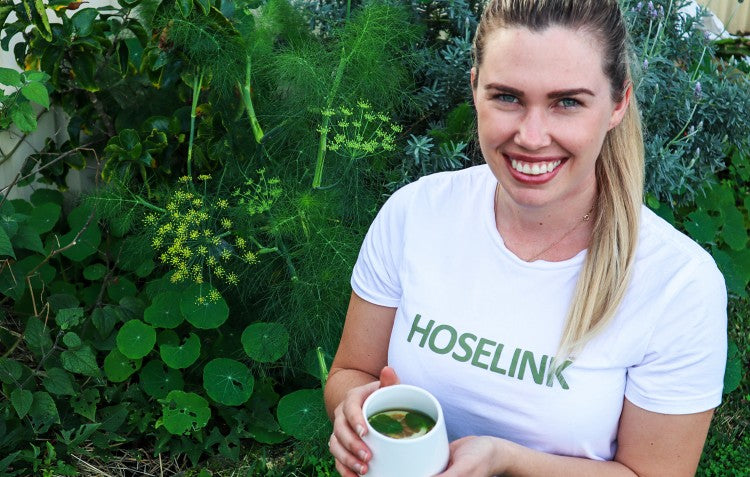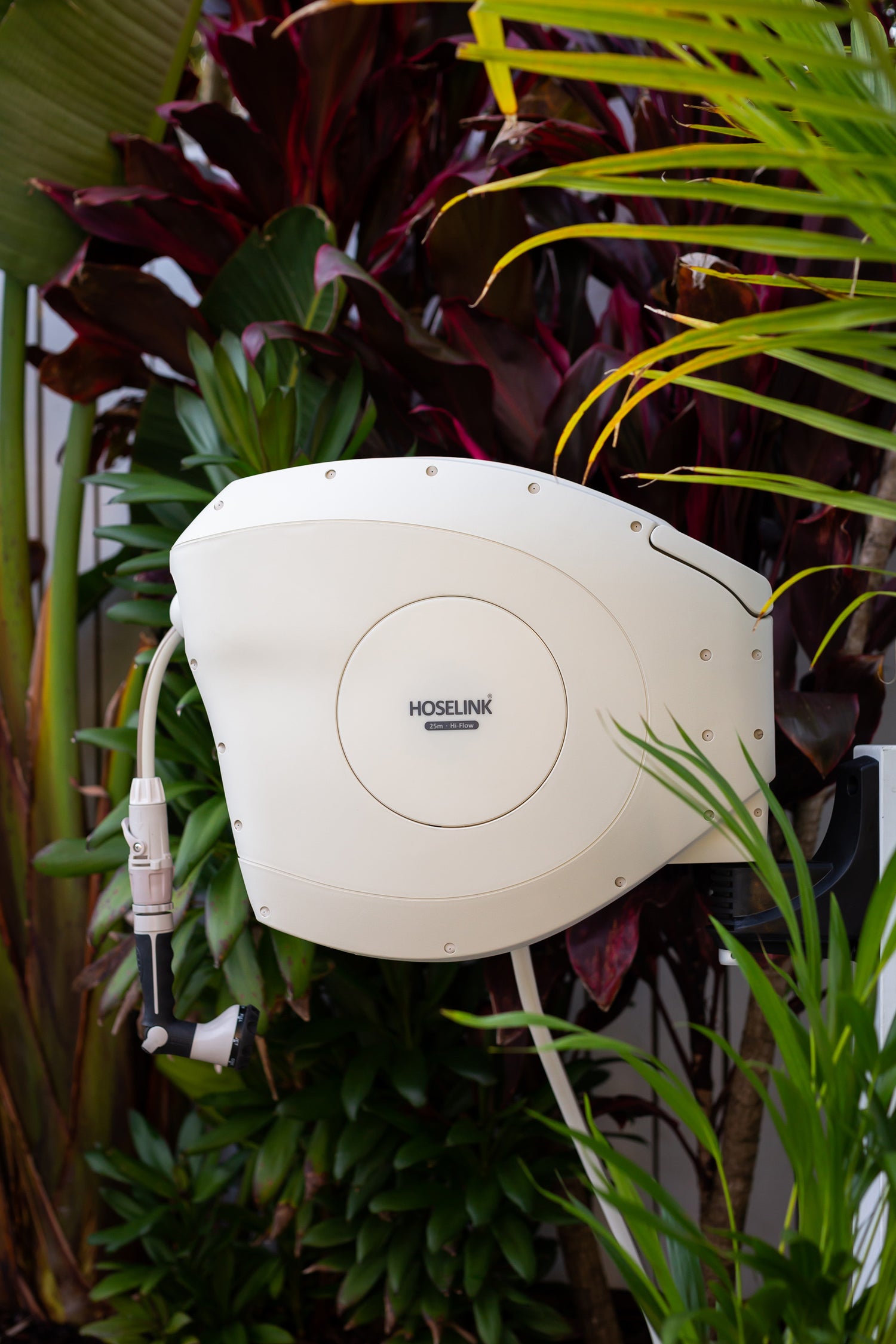Growing your own tea is so easy and has some great health benefits too! With the cooler temperatures during the winter months, I find myself having more hot drinks than usual. There are only so many cups of coffee I can have in a day! Herbal teas from the garden are my current obsession and are a much healthier alternative. All natural with no nasty chemicals or plastic packaging, there are many great reasons for you to start growing your own tea at home. And, as an added bonus, lots of the herbs and fruits that can be found in teas have great natural medicinal qualities too.
You can grow tea plants among your current plantings or create your own specific tea garden that is somewhere close and convenient to your kitchen. Not only are herbs great for tea, but once summer comes you can turn your tea garden into a cocktail or iced tea garden! The herbs I have suggested below can also be used for many culinary purposes in your everyday meals.
Planting a tea garden
To start your tea garden, you will need either space in your outdoor beds or a large pot/container. I repurposed a coffee table to make my tea garden, and I have it right outside my kitchen for ease and convenience. This way I know I will use the herbs a lot more often as I can see them from my kitchen window. I am growing a few new varieties, so my Hoselink Slate Plant Labels are a beautiful and functional addition to my tea garden.

Firstly, fill your pot or container with good quality compost and then plant out your selected herbs (some suggestions below) using the trusty Hoselink Garden Trowel. If the roots are tightly packed, gently shake off some excess soil to loosen them up before planting them into the soil. Once your herbs are planted, give the container a good water and feed with Hoselink’s Seaweed Solution; this will help with any transplant shock and will give your herbs a great kickstart. I love that the Hoselink Fertiliser Spray Mixer has a dial to get the perfect ratio.

Below are some of my favourite tea garden plants:
Mint - Mentha
Mint is a great ground cover plant and there are so many types! I went to buy a few varieties and I was blown away with the options available. Flavours such as ginger, chocolate, apple, berries and cream, lime, pineapple, grapefruit, spearmint, orange, and many more! I decided to go with grapefruit mint and spearmint, but I may end up adding to the collection as I love mint!
TIP FOR GROWING: Mint can be quite invasive when planted in the garden, so I would highly recommend planting mint in a pot or container garden. Mint is known for its bright, vibrant and fresh flavour, and it also has been known to aid digestion.

Lemon balm - Melissa officinalis
Lemon balm is a bushy perennial herb with a delicate lemony aroma and flavour. It is a very versatile herb that can be used in many dishes and is especially delicious in hot or cold teas. Lemon balm has calming properties and can be used to aid digestion, nausea and bloating.
German chamomile - Matricaria chamomilla
Chamomile is a bushy plant with white and yellow flowers that look similar to a daisy. The flowers are used in teas and have been known to aid sleep, relaxation, and have anti-inflammatory properties. You can use the flowers fresh or dried to make a natural calming tea.
Lemon bergamot - Monarda citriodora
Lemon Bergamot is an upright annual herb with beautiful purple flowers and a lemon aroma and flavour. The flowers are also great for attracting pollinators to your garden. You can use the leaves both fresh and dried, and they also make great cut flowers. Lemon Bergamot has been known to provide antioxidant and antibacterial qualities, making it a great addition to winter teas.
Lemon verbena - Aloysia citriodora
Lemon Verbena has a very strong, fragrant lemon scent and flavour excellent for making tea. The flowers are also edible and make beautiful scented cut flowers. Lemon verbena is great to use in desserts, cooking and cocktails too!

Fennel fronds - Foeniculum vulgare
Fennel fronds are always abundant in my garden and have a mild liquorice/aniseed flavour. This perennial plant not only looks beautiful, but it also grows an edible bulb at the base with a mass of delicate green frond leaves. Fennel produces beautiful yellow edible flowers that look like little firework explosions. Fennel fronds have been known to aid digestion and bloating.
Lemongrass - Cymbopogon
Lemongrass is a classic for any kitchen garden. This perennial plant is easy to grow and can get quite large. Lemongrass has a vibrant lemon flavour and can be used in many culinary dishes. Simply cut off some of the leaves and chop them ready to add into your herbal teas.
Dehydrated fruit
Dehydrated lemon is a staple in my garden tea. It adds a delicious lemon flavour, looks beautiful and can last for a long time on the shelf. You could try many different types of fresh or dehydrated fruits in your tea. Blood orange, lime and strawberry are also great flavours!
Added extras
There are many other delicious ingredients you can add to your garden teas to enhance the natural flavour and boost its health benefits. Honey is always a great winter addition with many antibacterial qualities, as well as spices such as cinnamon and star anise that also pack a punch with their flavour. Turmeric or ginger (both fresh and dried) will add a boost of delicious flavour as well as anti-inflammatory qualities, while lavender flowers can be used to help aid sleep and relaxation.

How to brew garden tea
Make sure you give your herbs a good rinse off before you use them. You can use your herbs fresh or dried to make tea. Once you have an abundance of tea herbs growing you may find it is time to give them a good haircut with the Hoselink Handy Snippers or Secateurs if they are getting too large or overcrowded. This is a great time to dry the excess leaves and make your own dried tea blends.
Fresh herbs can be delicate, so it's best to add both cold and hot water so that it's not pure boiling water, as this can kill off some of those beneficial vitamins and minerals. Let the tea steep for a few minutes and then either strain or leave the herbs in for a more intense flavour. You can either use a teacup or tea pot to brew your tea. I have a dedicated coffee plunger that I find works really well.

I hope this has given you some inspiration to get out and create your own tea garden! You may already have some of these plants growing in your garden and you can get straight into brewing your own tea. There are so many different seasonal combinations of flavours for you to try out and see which is your favourite. With just a few of these plants in your garden, you can try a different tea combination every day! Have fun with it and get experimenting. My favourite garden tea is currently dehydrated lemon, grapefruit mint and fennel frond.
There is just something so magical about walking out to the garden and finding herbs to make up your own homegrown tea blends.
If you want to see how I made my recycled tea garden watch my video HERE
All information in this article is for informational purposes only. Please seek professional advice before using.









